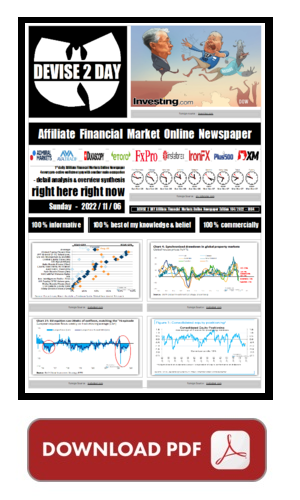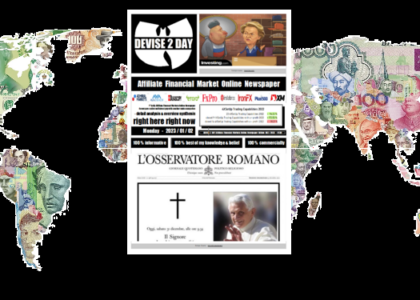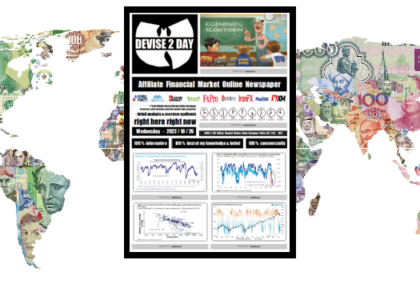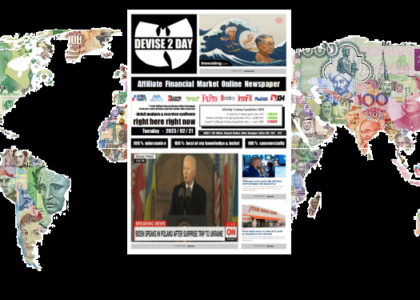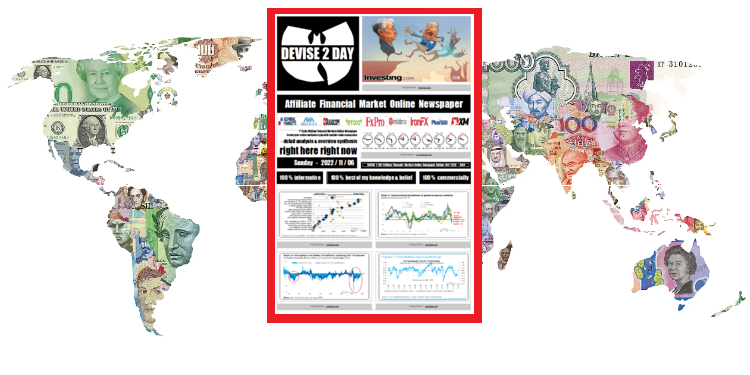
2022/11/06 (104) Technical Analysis – XETR-ALV & GBPUSD
Not A Good Week For Us In The GBPUSD
– But At Least We`re Still Profitable…
A Strong GBPUSD Cross Pair Is On The Other Hand More Or Less Always A Weak DXY
– That`s Why We Shouldn`t Ignore Some Key Technical Price Action Zones Across The DXY
99.910 points on 2022/02/20 was the intraday high before the corona virus outbreak crash – and that before as the stock market crashed.
94.650 points on 2002/03/09 was the intraday low crash while the corona virus outbreak – and that as the stock market started to crashed.
102.992 points on 2022/03/20 was the intraday high while the corona virus outbreak crash – and that more or less around stock market lows.
These price action zone is important – yes even essential. Because, if the DXY falls back into this price action zone (betwenn 102.992 and/or 94.6450 points) we can technicly argue that if the DXY is trading within this zone, the long-term uptrend has been briefly broken. And then we have to ask ourselves the question in the medium term? What’s next?
99.667 points on 2018/10/01 was the yearly high 2019
97.693 points on 2018/11/12 was the yearly high 2018
103.820 points on 2017/01/03 was the yearly high 2017
103.650 points on 2016/12/16 was the yearly high 2016
100.510 points on 2015/12/02 was the yearly high 2015
However let`s focus back on the 10Y Yields And/Or Stock Markets On Both Sides
US Stocks Rise, Still Poised for Sharp Weekly Loss While FTSE 100 Ends At Over Seven-Week High, Posts Robust Weekly Gain
US stocks gained traction in the final hour of trading on Friday but were still sharply down for the week on uncertainty about the size of future rate increases following a mixed jobs report. US employers hired more workers than expected in October but unemployment rose more than Wall Street forecasted. Also, FedCollins hinted that the pace of future increases could be smaller but did not rule out another 75 bps hike in December. Regional president Thomas Barkin echoed a similar view but noted that the US central bank might need to raise rates above 5%. Chinese stocks listed in the US jumped on hopes of an imminent relaxation of China’s COVID-19 curbs. DoorDash and mobile payment company Block rose after upbeat earnings reports while Carvana fell after missing expectations, and Twilio and Atlassian tumbled on disappointing guidance. The Dow is down 2% this week and poised to end 4 weeks of gains. The S&P and Nasdaq are down around 3.8% and 6.8%, on track to end 2-week winning streaks.
Equities in London advanced for a second consecutive session on Friday, with the blue-chip FTSE 100 finishing above the 7,300 mark for the first time in more than seven weeks, as heavyweight materials shares jumped tracking commodities prices. Big miners Anglo American and Rio Tinto were among the biggest gainers on the index, up 12% and 8%, respectively, as investors cheered news that China could relax its coronavirus-induced restrictions in the coming months. The exporter-heavy index added more than 4% this week, recording a third consecutive weekly gain. Investors digested the latest decision from the Bank of England, which, in a widely expected move, delivered a 75 basis point rate hike, the most significant rate increase since 1989, as it seeks to tame stubbornly high inflation. Still, on a positive note for investors, policymakers noted that borrowing costs were likely to go up less than markets expected.
US 10-Year Treasury Yield Returns Above 4% While UK 10-Year Gilt Yield Close To 6-Week Lows
The US 10-year Treasury note yield bounced back above 4% after investors’ bets that the Fed would cool down the pace of rate increases fell apart after the Federal Reserve press conference. Incoming data since the last meeting suggest ultimate level of interest rates will be higher than expected, Fed Chair Powell said. We have some ground to cover with interest rates”, and “there’s no sense that inflation is coming down.”, he added.
The yield on Britain’s 10-year gilt was around 3.5%, close to six-week lows, before the so-called ‘mini-budget’ announcement. The appointment of Rishi Sunak as the new British Prime Minister restored some market confidence rattled by former Prime Minister Liz Truss’s tax cut plans. Meanwhile, the BoE started selling ts UK gilts accumulated during a 13-year-old stimulus program and received solid demand at the first auction on Tuesday. The central bank said it sold GBP750 million in gilts maturing between 2026 and 2029 at an auction on Tuesday. Further auctions are set to take place until December. Elsewhere, the BoE is expected to hike interest rates by 75 bps on Thursday, after inflation returned to 40-year highs in September.
Dollar Rally Pauses, Still Poised For Weekly Gains While British Pound Heads For Sharp Weekly Loss
The dollar index weakened to below 111 on Friday, easing from its weekly highs of above 113 as investors paused to assess the outlook for monetary policy following a mixed jobs report. The job market remains extremely tight, which has made it harder for the Federal Reserve to cool the economy and tame inflation. The US economy added a stronger-than-expected 261K jobs in October but the unemployment rate increased more than anticipated to 3.7 percent. The most pronounced selling activity was against the Australian and New Zealand dollars, as higher commodity prices boosted bets on both currencies. Still, the DXY rallied almost 1.5% this week as a hawkish message from the Fed lent optimism to bulls. The US central bank raised interest rates by 75 basis points in a widely expected move on Wednesday, while Fed Chair Powell signaled that rates could peak higher even as he hinted at a slower pace of increases later this year.
The British pound was changing hands around $1.12 and is heading for an over 3% weekly decline as investors weighed the latest monetary decision from the Bank of England. In a widely expected move, the BoE delivered a 75 basis point rate hike, the most significant rate increase since 1989, as it seeks to tame stubbornly high inflation. However, policymakers noted that borrowing costs were likely to go up less than markets were expecting while acknowledging that the UK has already entered a recession. The message contrasted with Fed Chair Powell’s statement on Wednesday when he signaled that rates in the US would reach a higher peak than previously expected.
good morning, good day, and/or good night
at whatever time, wherever you are !
right here right now :

